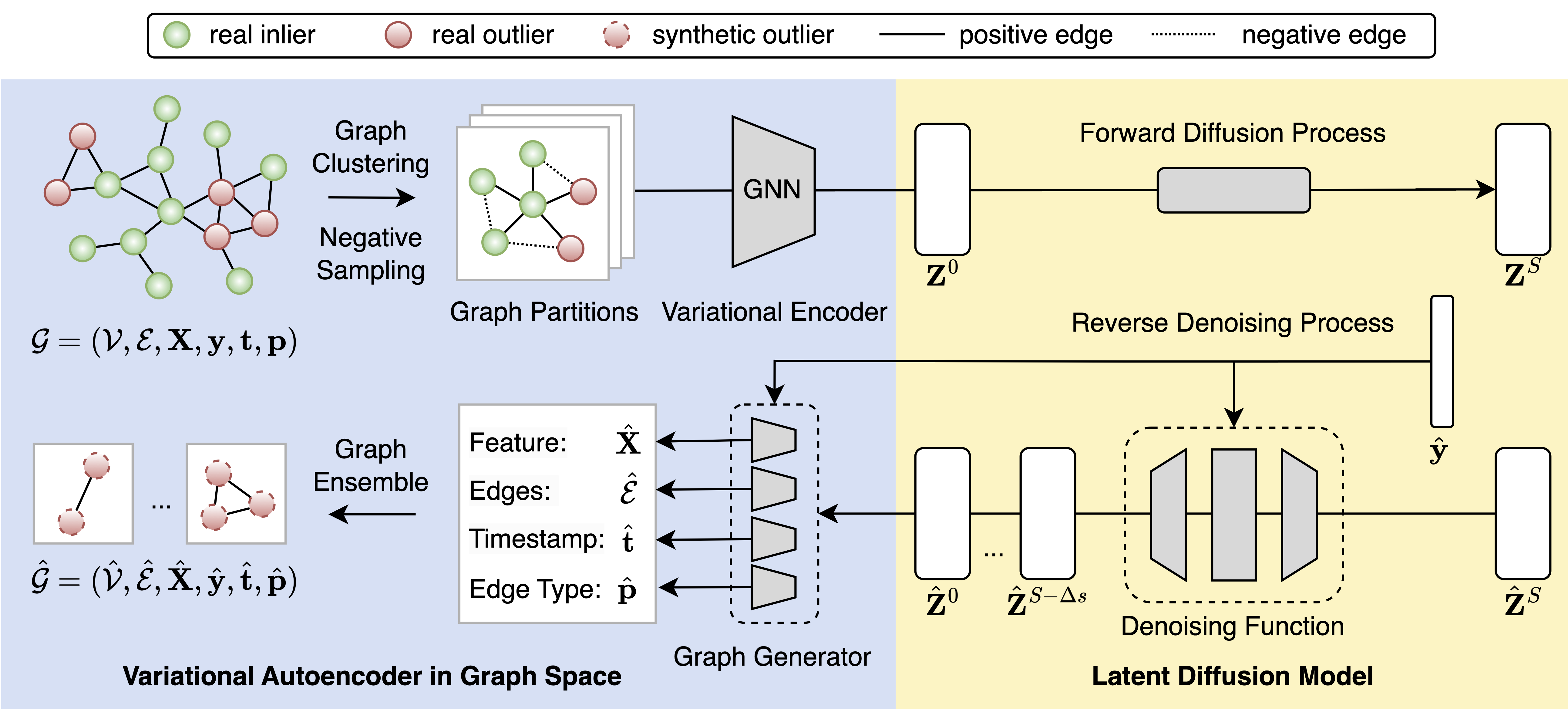GODM is a data augmentation package for supervised graph outlier detection. It generates synthetic graph outliers with latent diffusion models. This is the official implementation of Data Augmentation for Supervised Graph Outlier Detection with Latent Diffusion Models.
It is recommended to use pip for installation:
pip install godm
Alternatively, you can build from source by cloning this repository:
git clone https://github.com/kayzliu/godm.git
cd pygod
pip install .
If you have trouble installing metis, take a look at this tutorial.
from pygod.utils import load_data
data = load_data('weibo') # load data
from godm import GODM # import GODM
godm = GODM(lr=0.004) # init. GODM
aug_data = godm(data) # augment data
detector(aug_data) # train on dataThe input data should be torch_geometric.Data object with the following keys:
x: node features,edge_index: edge index,edge_time: edge times (optional, name can be changed bytime_attr),edge_type: edge types (optional, name can be changed bytype_attr),y: node labels,train_mask: training node mask,val_mask: validation node mask,test_mask: testing node mask.
So far, no additional keys is allowed. We may support more keys by padding in the future.
hid_dim(type:int, default:None): hidden dimension for VAE, i.e., latent embedding dimension.Nonemeans the largest power of 2 that is less than or equal to the feature dimension divided by two.diff_dim(type:int, default:None): hidden dimension for denoiser.Nonemeans as twice ashid_dim.vae_epochs(type:int, default:100): number of epochs for training VAE.diff_epochs(type:int, default:100): number of epochs for training diffusion model.patience(type:int, default:50): patience for early stopping.lr(type:float, default:0.001): learning rate.wd(type:float, default:0.): weight decay.batch_size(type:int, default:2048): batch size.threshold(type:float, default:0.75): threshold for edge generation.wx(type:float, default:1.): weight for node feature reconstruction loss.we(type:float, default:0.5): weight for edge reconstruction loss.beta(type:float, default:0.001): weight for KL divergence loss.wt(type:float, default:1.): weight for time prediction loss.time_attr(type:str, default:edge_time): attribute name for edge time.type_attr(type:str, default:edge_type): attribute name for edge type.wp(type:float, default:0.3): weight for node prediction loss.gen_nodes(type:int, default:None): number of nodes to generate.Nonemeans the same as the number of outliers in the original graph.sample_steps(type:int, default:50): number of steps for diffusion model sampling.device(type:int, default:0): GPU index, set to -1 for CPU.verbose(type:bool, default:False): verbose mode, enable for logging.
Our paper is publicly available. If you use GODM in a scientific publication, we would appreciate your citations:
@article{liu2023data,
title={Data Augmentation for Supervised Graph Outlier Detection with Latent Diffusion Models},
author={Liu, Kay and Zhang, Hengrui and Hu, Ziqing and Wang, Fangxin and Yu, Philip S.},
journal={arXiv preprint arXiv:2312.17679},
year={2023}
}
or:
Liu, K., Zhang, H., Hu, Z., Wang, F., and Yu, P.S. 2023. Data Augmentation for Supervised Graph Outlier Detection with Latent Diffusion Models. arXiv preprint arXiv:2312.17679.

